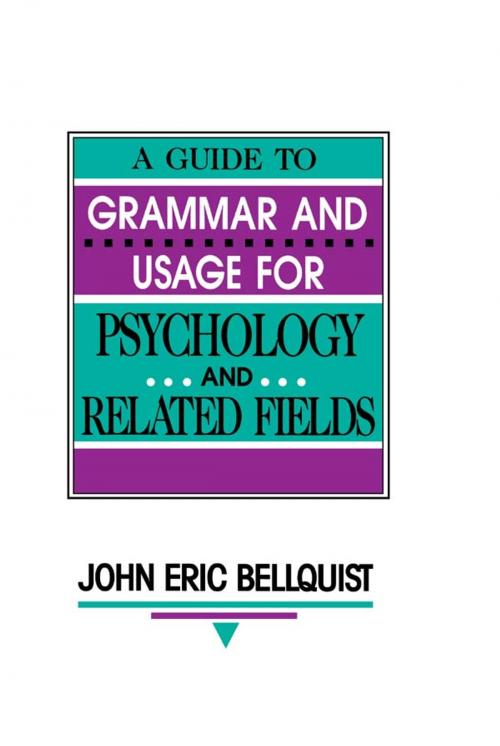A Guide To Grammar and Usage for Psychology and Related Fields
Nonfiction, Health & Well Being, Psychology, Education & Training| Author: | John Eric Bellquist | ISBN: | 9781317781189 |
| Publisher: | Taylor and Francis | Publication: | January 27, 2014 |
| Imprint: | Psychology Press | Language: | English |
| Author: | John Eric Bellquist |
| ISBN: | 9781317781189 |
| Publisher: | Taylor and Francis |
| Publication: | January 27, 2014 |
| Imprint: | Psychology Press |
| Language: | English |
Why another book on this topic? The author's experience editing leading journals in psychology suggests that publication manuals and books on writing about experimentation in psychology do not adequately address grammatical usage and style. Much of the advice published for scientific writers reads as if it had been written either by English teachers for writers who do not publish in scientific fields, or by scientific writers who think that the information already available in countless handbooks on grammar and style for student writers in English classes is enough. Unfortunately, such traditional handbooks do not offer the particular sorts of commentary that scientific writers need.
This book offers specific advice on a host of issues ranging from the appropriate use of abbreviations to wordiness -- and how to avoid it. Dr. Bellquist's expertise in both the English language and the language of scientific writing ideally positions him to offer guidelines on the use of the passive, the best wording for statistical presentations, and just how to describe experimental procedures, among many other topics. Complete with examples and principles to guide writing decisions, this book will assist both students and seasoned professionals in presenting their work clearly for maximum impact. This book is intended as a guide to grammar and usage for writers in scientific fields -- particularly in experimental psychology and all fields related to experimental psychology. Features of the book include:
* alphabetical entries and numerous cross references on grammar, usage, and style;
* numerous examples taken from scientific papers or based on actual cases;
* discussions of semantic problems of grammar such as modification, predication, and statement;
* and discussions of usage specific to experimental psychology, statistics, and related fields.
Why another book on this topic? The author's experience editing leading journals in psychology suggests that publication manuals and books on writing about experimentation in psychology do not adequately address grammatical usage and style. Much of the advice published for scientific writers reads as if it had been written either by English teachers for writers who do not publish in scientific fields, or by scientific writers who think that the information already available in countless handbooks on grammar and style for student writers in English classes is enough. Unfortunately, such traditional handbooks do not offer the particular sorts of commentary that scientific writers need.
This book offers specific advice on a host of issues ranging from the appropriate use of abbreviations to wordiness -- and how to avoid it. Dr. Bellquist's expertise in both the English language and the language of scientific writing ideally positions him to offer guidelines on the use of the passive, the best wording for statistical presentations, and just how to describe experimental procedures, among many other topics. Complete with examples and principles to guide writing decisions, this book will assist both students and seasoned professionals in presenting their work clearly for maximum impact. This book is intended as a guide to grammar and usage for writers in scientific fields -- particularly in experimental psychology and all fields related to experimental psychology. Features of the book include:
* alphabetical entries and numerous cross references on grammar, usage, and style;
* numerous examples taken from scientific papers or based on actual cases;
* discussions of semantic problems of grammar such as modification, predication, and statement;
* and discussions of usage specific to experimental psychology, statistics, and related fields.















